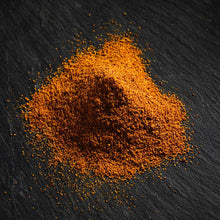- INFO
- WHERE
- RECIPES
- STORAGE
- HEALTH
Cumin is a global spice – it’s widely available but there’s a big difference between a top quality and basic cumin. It should smell lively, not flat, with earthy aromas: hints of woodiness, green citrus notes and a savoury spiciness.
The advantage of pre-ground cumin is that it’s quick and easy to use. Put a pinch over flatbread, stir it into a yoghurt-based dip, or toss a teaspoon through roast chickpeas. Ground cumin is one of the most frequently used spices in a cook’s arsenal – and although freshly-grinding your own seeds guarantees the best flavour, speed is often an asset in the kitchen.
It’s thought that cumin is native to Egypt, but Berbers transported it across the Sahara, Arab traders took it to the Middle East and now it’s an everyday spice from the Indian subcontinent to Central America. Ground cumin features in blends like garam masala and harissa. It’s a key ingredient in Turkish tagines and Mexican mole, and might be used to spike trays of roast vegetables, meat marinades and even salted lassi.
ALSO KNOWN AS: Jeera, Zeera
India is the biggest global producer, but government quotas only allow it to be exported once domestic needs have been met – so just 20% leaves the country. We've managed to track down some of this, and I think you'll agree that it was worth the effort.
COOK THIS SPICE
Cheat's Imam Bayildi
The Ultimate Chilli Con Carne
Shakshuka "Turkish Eggs"
"Tavuk Sis" Grilled Chicken Skewers
Chetna's Chicken & Chickpea Curry
Syrian Spaghetti with Pomegranate & Lentils
Chickpea Salad
Cumin should be stored in a dark, airtight container, to retain its lively flavours, and prevent it from becoming dull and flat.
Cumin has long been used for the treatment of a wide variety of disorders, including mild digestive disorder and diarrhoea. Modern research indicates that cumin can be effective in improving IBS symptoms and has been shown to possess significant antioxidant properties, for more information click HERE.






